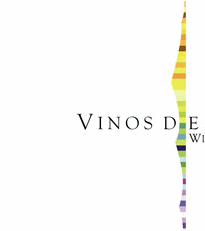Panama: Panama People Profile 2012
2012/03/23
Panama People Profile 2012
THE majority of the population, 50.1%, was Mestizo. African and Mulattos were together the largest minority, accounting for 22%. For the remaining groups the percentages were: Ameridian 6.7%, European 8.6%, Asian 5.5%, and other 7.1%.The Amerindian population includes seven indigenous peoples: the Emberá, Wounaan, Guaymí, Ngöbe Buglé, Kuna, Naso and Bribri. More than half the population lives in the Panama City–Colón metropolitan corridor.
The culture, customs, and language of the Panamanians are predominantly Caribbean and Spanish. Spanish is the official and dominant language. About 93% speak Spanish as their first language, though there are many citizens who speak both English and Spanish or native languages, such as Ngäbere.[31] Some new statistics show that as second language, English is spoken by an 8%, French by a 4% and Arabic by 1%. The private educational system also offers German, Portuguese and Italian.
Panama, because of its historical reliance on commerce, is above all an ethnic salad bowl. This is shown, for instance, by its considerable population of Afro-Antillean and Chinese origin. The first Chinese immigrated to Panama from southern China to help build the Panama Railroad in the 19th century. They were followed by several waves of immigrants whose descendants number around 50,000. Starting in the 1970s, a further 80,000 have immigrated from other parts of China as well.
Afro-Panamanians have played a significant role in the creation of the republic. Some historians have estimated that up to 50% of the population of Panama has some African ancestry. The descendants of the Africans who arrived during the colonial era are intermixed in the general population or are found in small Afro-Panamanian communities along the Atlantic Coast and in villages within the Darién jungle. Most of the people in Darien are fishermen or small scale farmers growing crops such as bananas, rice and coffee as well as raising livestock. Other Afro-Panamanians are the descendants of later migrants from the Caribbean who came to work on railroad construction projects, commercial agricultural enterprises, and especially the canal. Important Afro-Caribbean community areas include towns and cities such as Colon, Cristobal and Balboa, in the former Canal Zone,as well as the Rio Abajo area of Panama City. Another region with a large Afro-Caribbean population is the province of Bocas del Toro on the Caribbean coast just south of Costa Rica.
Most of the Panamanian population of West Indian descent owe their presence in the country to the monumental efforts to build the Panama Canal in the late 19th and early 20th centuries. Three-quarters of the 50,000 workers who built the canal were Afro Caribbean migrants from the British West Indies. Thousands of Afro-Caribbean workers were recruited from Jamaica, Barbados and Trinidad.
Panama is the smallest Spanish-speaking Latin American country in terms of population.
The most common religion in Panama is Roman Catholicism – various sources estimate that 75–85% of the population identifies itself as Roman Catholic and 15–25% percent as evangelical Christian. The Bahá'í Faith community of Panama is estimated at 2.00% of the national population, or about 60,000[36] and is home to one of the seven Baha'i Houses of Worship. Smaller religious groups include Jewish and Muslim communities with approximately 10,000 members each, and small groups of Hindus, Buddhists and Rastafarians.
Indigenous religions include Ibeorgun (among Kuna) and Mamatata (among Ngöbe Buglé)
- Panama News
-
- AFGHANISTAN: UNWTO: International tourism – strongest half-year results since 2010
- ARGENTINA: Odebrecht agrees to pay $220 million fine, aid Panama probe
- PANAMA: Panama’s government steps up support for agriculture amid falling exports
- PANAMA: Developers seek to tap Panama’s retail sector, with numerous projects in the pipeline
- AFGHANISTAN: Higher earning Why a university degree is worth more in some countries than others
- ARGENTINA: China looks to deepen ties with Latin America
- Trending Articles
-
- EUROPE: Ball Corporation Debuts Three New Aluminium Beverage Can Sizes
- ZAMBIA: Zambia insists on fish import restriction despite deficit
- SOUTH AFRICA: Nigeria and South Africa emerge from recession
- WORLD: How fair is our food? Big companies take reins on sourcing schemes
- CHINA: Xi Jinping opens BRICS Summit in Xiamen, asks members to shelve differences
- NIGERIA: The Security and Exchange Commission approves the 40th Annual General Meeting of Oando PLC









